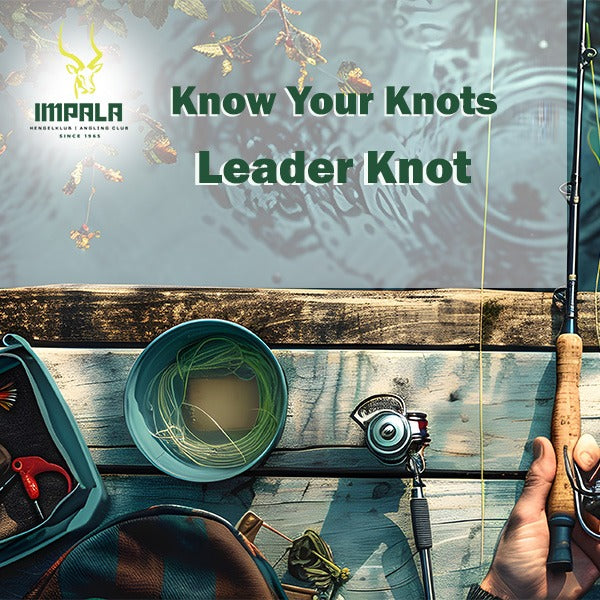Welcome back to our enlightening journey through the world of knots! In this second episode of the "Know Your Knots" series, we dive deeper into the intricate realm of knot tying. Building on the foundation we laid in our opening article, we’re set to explore more knots, their unique applications, and the stories behind its development. Whether you're a seasoned knot enthusiast or a curious newcomer, this article aspires to enrich your knowledge and skills in the artful practice of knot tying. So, grab your ropes and let's untangle and tie another knot!
Impala is proud to share the second part of the Know Your Knots in our very own How To Series: This step-by-step guide, tried and tested by the Impala Angling Club, to master the art of tying a perfect leader knot.
Mastering the Leader Knot: A Step-by-Step Guide
Fishing requires a blend of skill, patience, and knowledge, not just of fish behaviour but also of the tools and techniques that make a successful catch possible. One essential skill is tying effective knots, particularly the leader knot. This knot is critical for anglers who want to attach a leader line to the main fishing line seamlessly, enhancing the presentation of the bait or lure and increasing the likelihood of a catch. The leader knot is revered for its strength and simplicity, ensuring that the transition from the main line to the leader is both smooth and secure.
What Is a Leader Knot?
A leader knot, commonly known as the Double Surgeon's Knot or the Blood Knot, is used to connect two pieces of fishing line while maintaining a high level of strength. It is especially useful when the lines are of slightly different diameters. The goal is to create a connection that is as strong as or stronger than the line itself, preventing breakages when landing a fish.
Step 1: Align the Lines
Begin by laying the end of your main line alongside the leader material. Ensure that there is an overlap of several inches. The overlap is crucial as it provides the material necessary to form the knot.
Step 2: Create a Loop
Hold the point where the lines overlap between your thumb and forefinger. Then, using your other hand, form a loop by simply folding the overlapped lines back over themselves. This loop will be the foundation of your knot.
Step 3: Wrap the Lines
With the loop formed, take the end of your leader and the end of your main line together and pass them through the loop you've created. For a stronger knot, it's advisable to twist or wrap them around at least thrice. The more wraps, the stronger your knot will be, but also the more difficult it may be to tighten.
Step 4: Tighten the Knot
After wrapping, you need to lubricate the knot before tightening it. You can do this by moistening it with saliva or water. This step reduces friction, allowing the lines to slide against each other smoothly as you pull on each line's end to tighten the knot.
Step 5: Trim the Excess
Once the knot is fully tightened and secure, use a pair of sharp scissors or a knife to trim the excess line from both the main line and leader. Leave a small tag end on each side to ensure the knot does not slip.
Step 6: Final Inspection
Inspect the knot to ensure it's compact, smooth, and free from any loose ends or imperfections. A well-tied leader knot should have a uniform spiral pattern with the tag ends trimmed close to the knot body.
The leader knot is an invaluable part of an angler's toolkit, crucial for connecting lines with reliability and strength. Mastery of this knot enables anglers to confidently tackle a broader range of fishing scenarios, helping to ensure that once the fish bites, it's caught securely. As with any skill, practice is key; the more you tie this knot, the more intuitive and effective your technique will become. Embrace the challenge and let your knots be the link to your next big catch.
Impala Angling Club has been at the forefront of angling since 1960’s The club and its members are family oriented and have the passion to grow and develop communities youth by affording them opportunities to grow the sport. Impala angling club consist of various previous and current provincial and national anglers within the club. The club is the gateway to representing a province or a country. For more information about Impala Angling Club and services, visit our website at www.impalaclub.co.za

